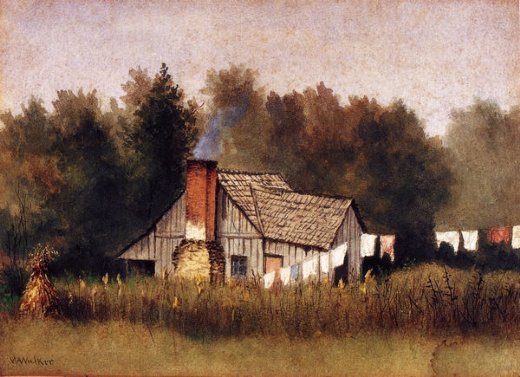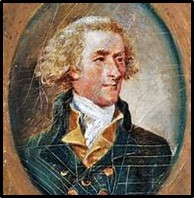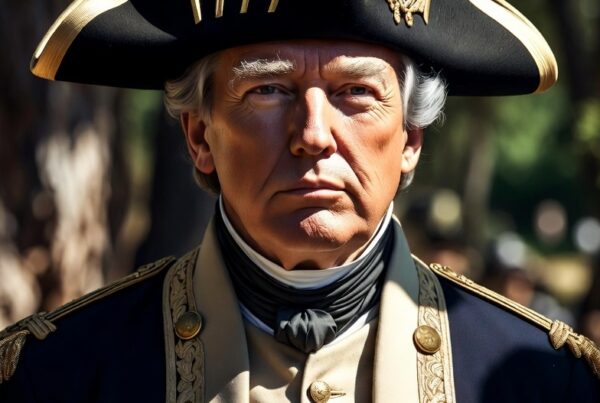Students will be surprised to learn of the extent to which African Americans supported the Confederate army and navy. That will be covered in some detail in this chapter. Also covered with be the more familiar story of African Americans fighting in Federal regiments, but fewer words are devoted to that subject, for it is covered well in histories you already have. You probably know that President Lincoln’s January 1863 Emancipation Proclamation was also aimed at inducting into the Federal army many African American men living in regions of the Confederacy occupied by Federal forces. By that time Federals controlled much of Tennessee, Arkansas, southern Louisiana and certain coastal Atlantic islands, where large African American populations existed. They could also be inducted out of Maryland, Kentucky and Missouri in addition to the Republican states – all taken into regiments reserved for African American soldiers, led by white officers. Here, Earl L. Ijames presents the history of African American participation on the battlefields of the War Between the States and explains why they were there – south and north.
The History
The War Between the States was more like The Revolutionary War than a Civil War. The Rebel Army of 1776 allowed and encouraged enslaved men like Toby Gilmore of Massachusetts and free persons of color like John Chavis who served from Virginia to enlist in their colony’s defense and earn their freedom and citizenship in a new America. After the British Army encountered the Patriots’ guerilla tactics and their employment of these men in various capacities, Gen. Corwallis similarly declared freedom to encourage those men to join the British. After Independence, the 1792 Militia Act disallowed future service by African Americans in the U.S. Army and in fact paved the way for Veterans of Color like James Newby of North Carolina to be re-enslaved.
Four score after gaining freedom from Great Britain, America faced an internal war that threatened her existence. The Civil War would be waged between the states in the Union and the states and territories sympathetic to the more autonomous Confederate States. Initially, the Federal government fought the war to keep these states that still allowed slavery from leaving the Union. But the Federal Militia Act prohibited enslaved and free men of color from fighting for the Union. “When the Civil War started there went up a cry for volunteers, white or Negro. Daniel and Milford Brooks were free men of color from Cleveland County, NC who would have been conscripted into the Confederate Army. The Brooks brothers preferred to volunteer and walked 17 miles to Shelby, NC and did so.”
With the 1861 capture of New Orleans, Union Gen. Benjamin Butler encountered the Louisiana Native Guard, a militia comprised of free men of color for the defense of the economic and cultural hub of the Gulf Coast. After the fall of the Crescent City, Gen. Butler attempted to recruit the Confederates of Color into the Union ranks. But Pres. Lincoln prohibited the gesture with a reminder of the Federal prohibition of troops of color in the Union Army.
After nearly two years of Civil War, the Confederate Army, with the aid of people of color, had been defeating the Union army in battle. Formerly enslaved men like John Parker of Virginia served at First Manassas. Weary Clyburn escaped slavery to serve as a body servant in the Co. E, 12th S.C. Regiment and free persons of color like Pvt. Miles Reed manned one of the artillery regiments, the Co. D, 40th NC Troops, at the fall of Ft. Fisher. These men fought for their individual freedom and defense of their country (now referred as states) before the Emancipation Proclamation.
The July 1862 Confederate Victory at the Second Battle of Bull Run at Manassas, VA, prompted the United States Congress to pass the Second Confiscation Act, which called for the seizure of property, or contraband, from supporters of the Confederacy in the South. Additionally, Great Britain and France moved closer to recognizing the Confederacy with each Union defeat.
Seeking a way to reverse the tide of war, President Abraham Lincoln wrote a draft floating the idea of emancipation, or freedom, to his cabinet. Secretary of State William Seward warned Lincoln that the Union needed a victory before the President’s idea could be made public. In 1862, formerly enslaved Frederick Douglass observed “There are at the present moment, many Colored men in the Confederate Army doing duty not only as cooks, laborers and servants but as real soldiers having muskets on their shoulders and bullets in their pockets ready to shoot down… and do what soldiers may do to destroy the Federal Government.”
On September 17, 1862 the Union and Confederate Armies converged on a large corn field in Sharpsburg, MD with a single dirt road winding through it. What ensued was the bloodiest day in American history- The Battle of Antietam. One of those casualties was Capt. Walter Bryson of Henderson, NC. Capt. Bryson’s remains were brought home to western North Carolina by his body servant, George Mills.
President Lincoln, being a masterful politician and psychological operative, declared victory over the 23,000 American casualties and then issued the Preliminary Emancipation Proclamation. Lincoln changed the course of the WBTS from saving the Union to include emancipation of more than 4 million men, women and children of African descent. The Preliminary Emancipation Proclamation (PEP) is a handwritten, seven-page, ribbon-bound document signed by President Abraham Lincoln and Secretary of State William Seward and affixed with the seal of the United States. This document warns the Confederate States that if the South did not end the war by January 1, 1863, he would free the men, women and children they held in chattel slavery.
January 1, 1863 marked a turning point for the nation. The PEP had served notice to the Confederate States to return to the Union by New Year’s Day 1863 or their enslaved persons would be declared free. Enslaved persons in Union-held territory were omitted from the freedom document. The masterful psychological operative transformed New Year’s Day – a day historically designated to buy, sell and hire slaves – into Emancipation Day. Men like Sam Ashe served as a body servant to Capt. Richard Ashe at the 1861 Battle of Big Bethel, VA Sam Ashe fired the fatal shot killing Union Major Theodore Winthrop thus deciding the first battle of the war in the Confederate’s favor. After January 1862, Sam Ashe was hired out to the North Carolina Railroad to serve the Confederacy.
New Year’s Eve has been known as First Night Watch in the African American community since 1863. It is still observed in many African American churches and organizations. The Emancipation Proclamation (EP) went into effect New Year’s Day 1863.
The Emancipation Proclamation facilitated the enlistment of enslaved and free people of color into the Union Army. As Commander in Chief, President Lincoln called the EP a “fit and necessary war measure.” The First Confiscation Act allowed the Union to employ “persons of African descent” in the war effort in supporting roles. But the Second Confiscation Act repealed the 1792 Militia Act that barred men of color from serving in the United States Army. Under the Second Act, the U.S. War Department authorized raising the African Brigade, later renamed the United States Colored Troops (USCT).
Confederates of Color served and died on the battlefields of America before and after the formation of the United States Colored Troops. Some of these soldiers of color were also Indians like Thomas’ Legion, the 23rd Reg. NC Troops. Confederates of Color like Pvt. Hawkins Wesley Carter of the 46th NC Troops served for the entire war in various capacities. According to Carter’s 1927 Confederate pension application, he “threw up breast works, worked on the railroad, cooked, waited on white soldiers, and fought seven days at the 1864 Wilderness Campaign in Virginia.”
Unlike the Confederates of Color, however, the United States Colored Troops served in segregated units under the command of President Lincoln’s handpicked white abolitionists. Gen. Edward A. Wild was appointed by Pres. Lincoln in North Carolina. Gen. Wild recruited in the heavily concentrated black counties across eastern North Carolina. The USCT was stationed in New Bern, NC where men, women and children sought freedom under the protection of the USCT in nearby James City. More than 200,000 formerly enslaved and free persons of color enlisted in the Union Army and Navy beginning in 1863.
Men like Abraham Galloway, son of an Irish seaman and an African American woman, was born enslaved in Wilmington, NC. During the War Between the States, Galloway was a spy who later met with President Lincoln to help raise the USCT, especially in the South. Robert Smalls commandeered a Confederate vessel into the hands of the Union Navy. Smalls also helped to raise the first Colored Union Regiment in the South, the 33rd USCT in South Carolina.
Other men like William Henry Singleton left the 7th NC Cavalry after the 1862 Battle of Kinston to enlist in the USCT in nearby New Bern. The Union army first thought that Singleton was a spy until the Colonel from the NC Cavalry sought him at New Bern. And Luke Martin left his plantation in Washington Co., NC and swam three rivers during the winter of 1863 to earn the title as Pvt. Luke Martin, 35th USCT.
A few USCT earned rank as Sergeant Major. Sgt. Parker D. Robbins enlisted in the 2nd US Colored Cavalry in Virginia in 1863. The 2nd USCC was among the first four regiments (all USCT) at the April 1865 fall of the Confederate Capital at Richmond, VA. The 36th USCT raised in northeastern NC was the first regiment at the fall of Richmond.
The Emancipation Proclamation needed to be secured with a military victory and unconditional surrender of the Confederate Army. Otherwise, the EP had no constitutional merit. The ultimate military victory would entail conquering Fort Fisher, the largest earthen fortress in the history of the world constructed by free persons of color like Enos Jacobs of Sampson County, NC. The fort was largely constructed by enslaved men like Aaron Perry of Union Co., NC who also served in the 37th NC Troops as a body servant. Many Indians from Robeson County, NC also worked on the fort. General Robert E. Lee declared that if Fort Fisher fell, then the Confederacy would follow suit.
After an initial failure to take the fort in December 1864, Union forces mounted the largest amphibious attack in the history of the world (World War II D-Day June 6, 1944 would later surpass Ft. Fisher). On January 20, 1865 the fort fell and was surrendered to the 27th USCT, raised in Ohio. Confederates of Color like Pvt. Richard Dempsey in the 36th NC Troops and Pvt. Reed in the 40th NCT were captured by the Federals as Prisoners of War. After the fall of Fort Fisher, the US Congress passed the 13th Amendment to the Constitution on January 31, 1865. The amendment stated that slavery nor involuntary servitude could not exist in the United States “or any place subject to their jurisdiction.”
President Lincoln praised the USCT: “Without the help of the black freedmen, the war against the South could not have been won.” The U. S. Colored Troops fought for their freedom and helped to save the Union.
Summary
The history of African Americans of the Southern Culture during the era of the War Between the States is complex. After early 1863, many were inducted into regiments of Colored Troops, under white officers. And many of those suffered horrific fighting. But a great number were helpful to the defense of the Confederacy, and that is the important lesson to be learned. It takes some digging, for most of the evidence of Confederate support is obscured. But learning the Confederate part of the story is a worthwhile adventure.
Below is the movie trailer for Ijames’s award winning project on Black Confederate soldiers.







